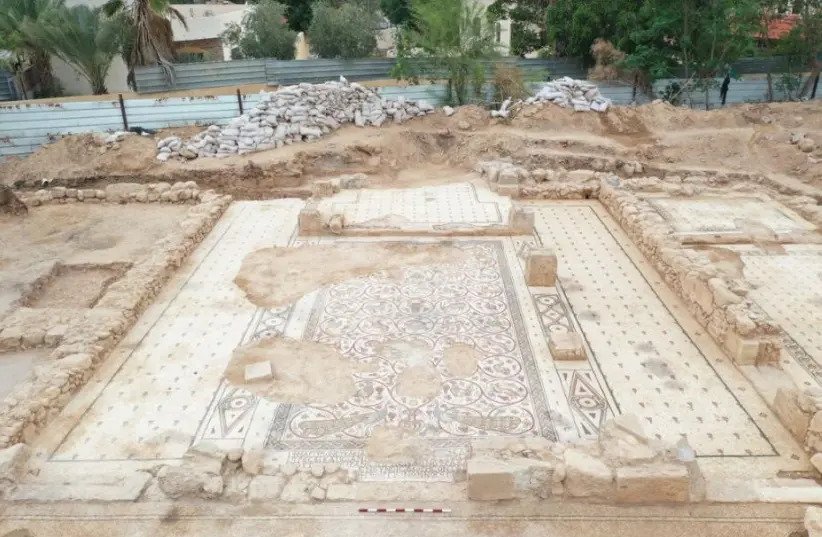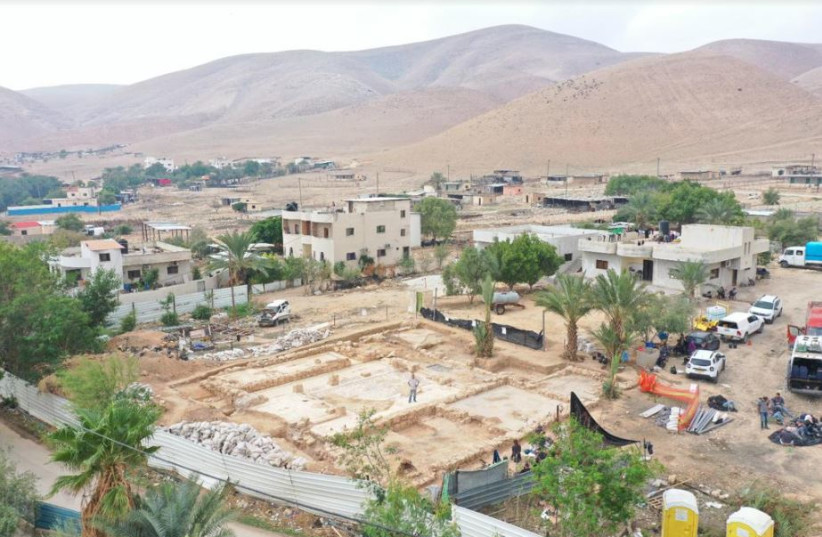Jericho: Ancient Byzantine period Church uncovered from the 6th Century

An ancient Byzantine church with large and preserved mosaic floors was discovered by the Civil Administration near the city of Jericho in Israel’s West Bank, the Civil Administration announced Wednesday.
The church in question has been the focus of weeks of excavations by the Civil Administration’s archaeology unit. It was likely constructed sometime during the sixth century CE and was found to be around 250 square meters, with the sanctuary’s entrance having an over three-meter-long Greek inscription, mentioning individuals who helped build the church.
Notably, the construction of the church likely was very expensive. This is because it seems to have been at least partly made out of materials that can’t be found in the surrounding area, like marble columns and asphalt. These would have had to be transported from quite a fair distance away.
The expensive nature of the church may also be related to its size, large enough to likely be one of the largest churches in the region.

How was this church so well-preserved?
What was surprising about this discovery was the fact that the Byzantine church was so well-preserved despite centuries of Muslim rule in the area.
Notably, Islam prohibits the displaying of pictures of individuals, including religious icons. Due to this rule, it was often common for Muslim rulers to practice iconoclasm, which is to deface or destroy images since they violated an Islamic tenant.
It also seems to have notably survived the calamity that was the earthquake that struck the Levant in 749 CE, which famously destroyed churches and monasteries throughout the region.
Despite all of this, the mosaic floor of the church is still intact. The scenes on the mosaic depict vines braiding together into a number of symbols and images of animals.
It should be noted that one possible factor that may have been at play here was that the church was seemingly already abandoned years before the earthquake with the doors locked off.
“We will continue to work to discover and preserve the history of Judea and Samaria”
Hanania Hizmi
What will happen to the newly-discovered Byzantine church?
Following its discovery, the Civil Administration plans to replicate the mosaic in order to display it at their “Good Samaritans” museum site.
This is just one of the many archaeological discoveries in the West Bank made by the Civil Administration’s archaeology unit, as noted by Civil Administration archaeology official Hanania Hizmi, who added that, “We will continue to work to discover and preserve the history of Judea and Samaria.”
Source: jpost.com




